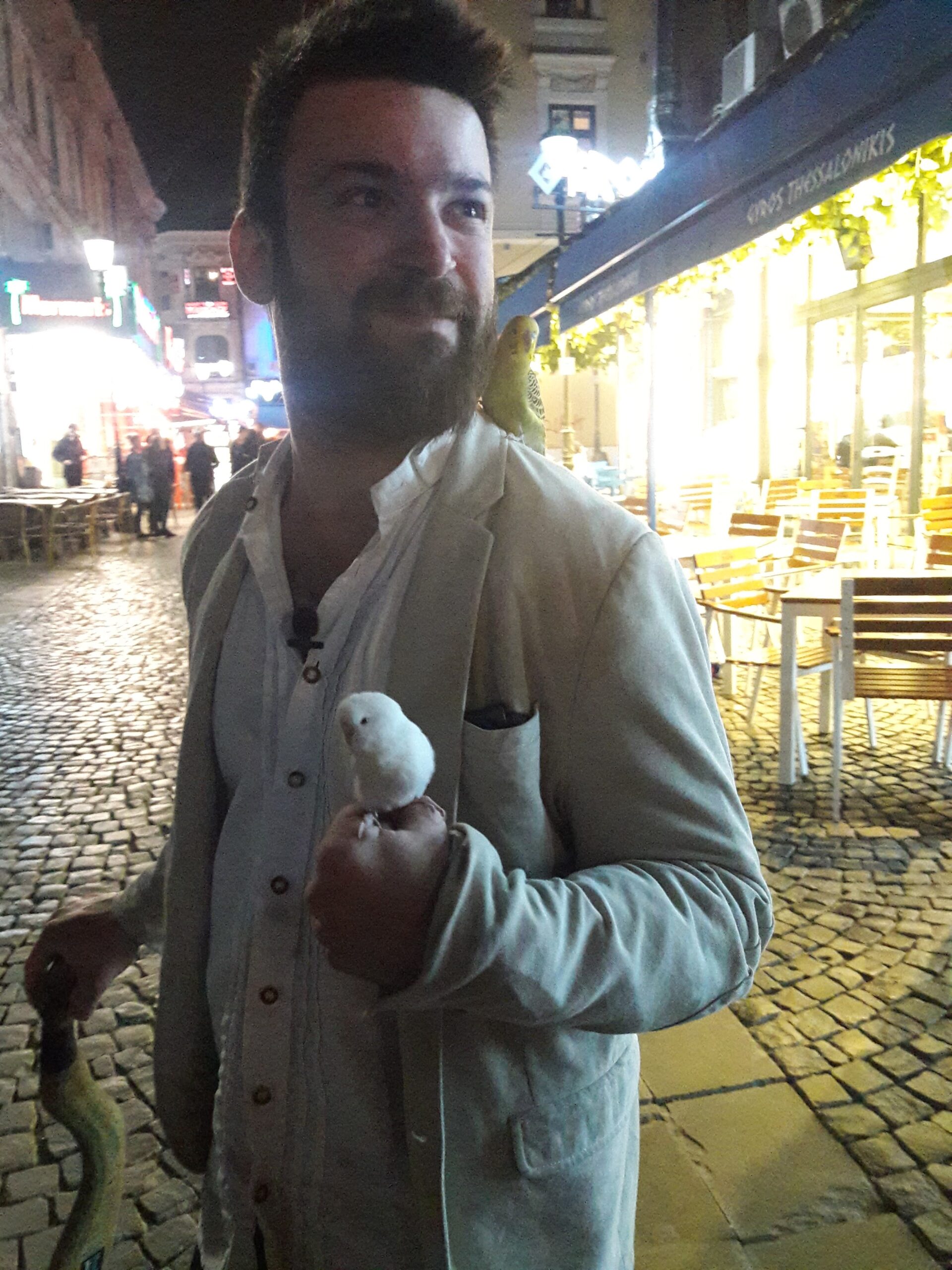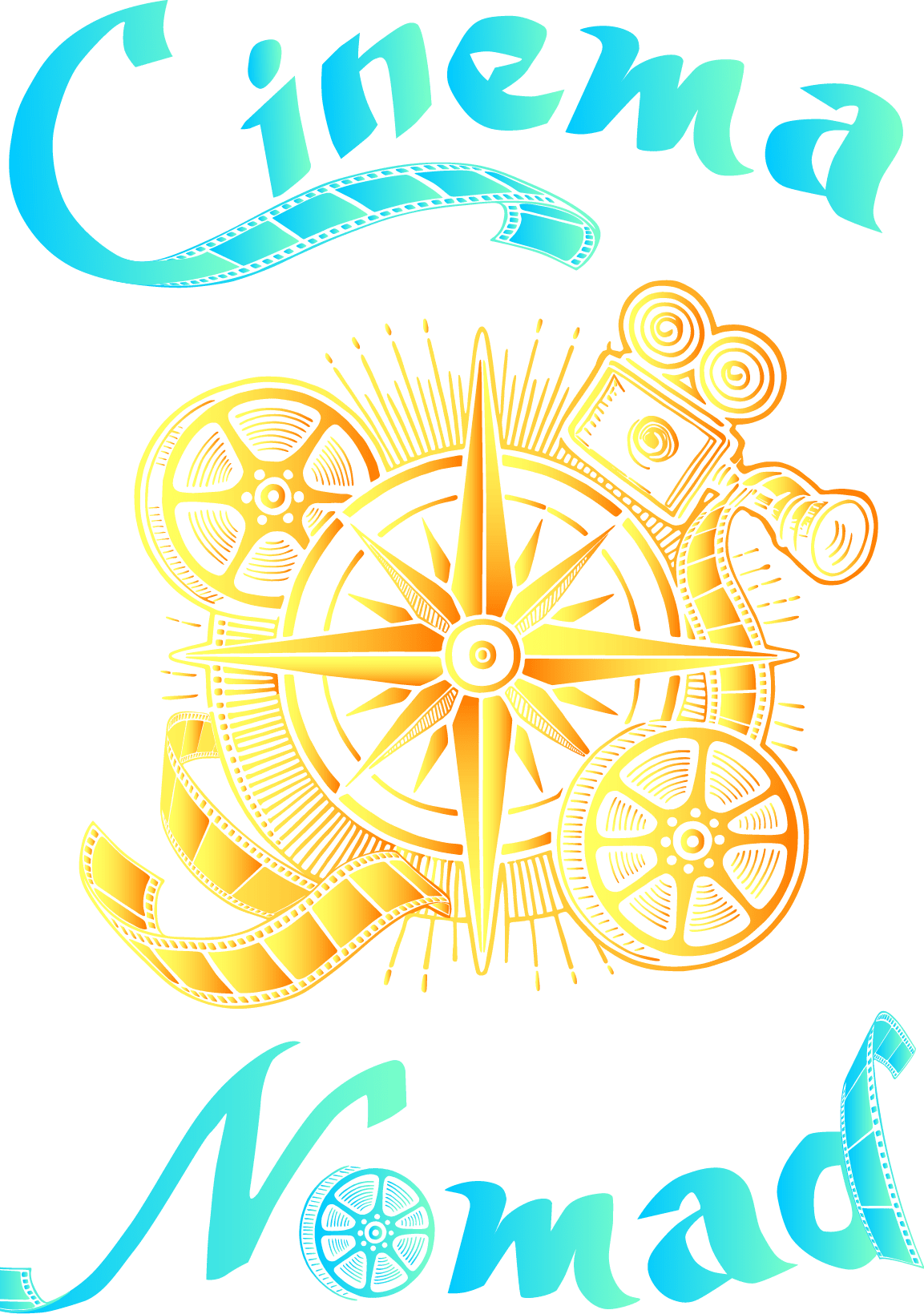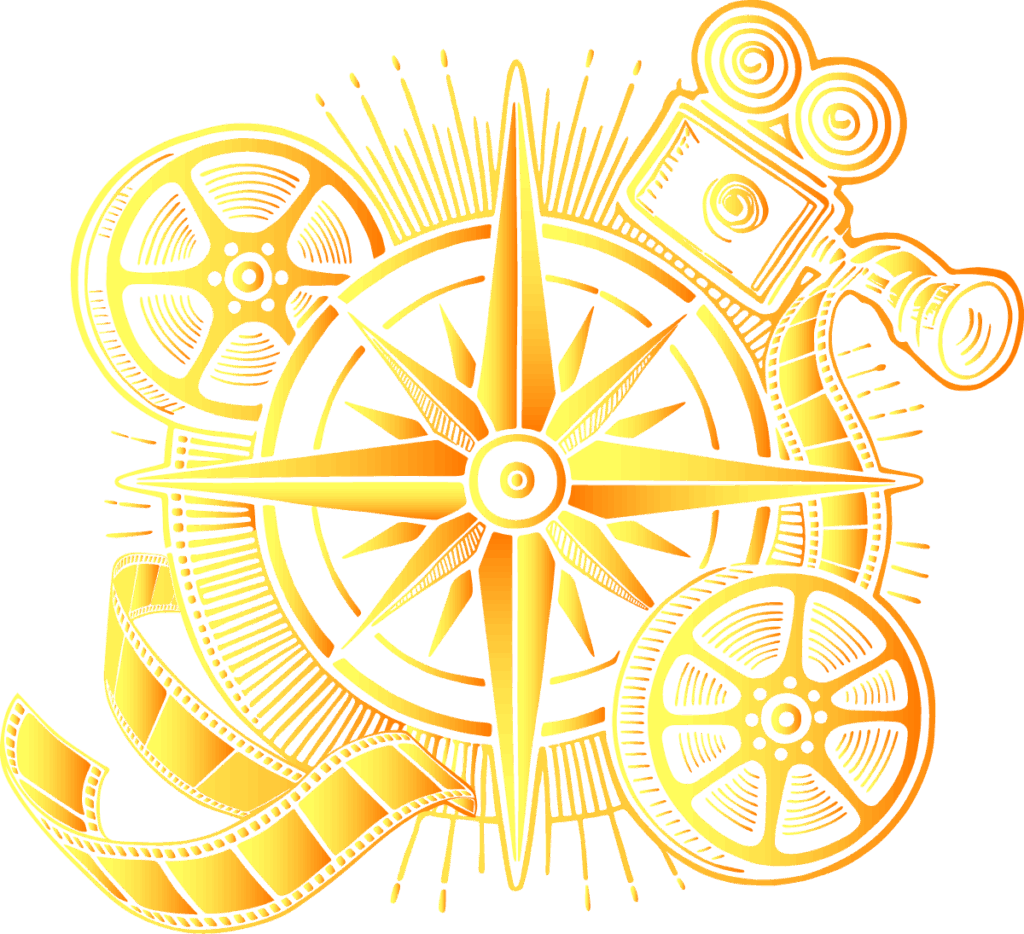
Romania
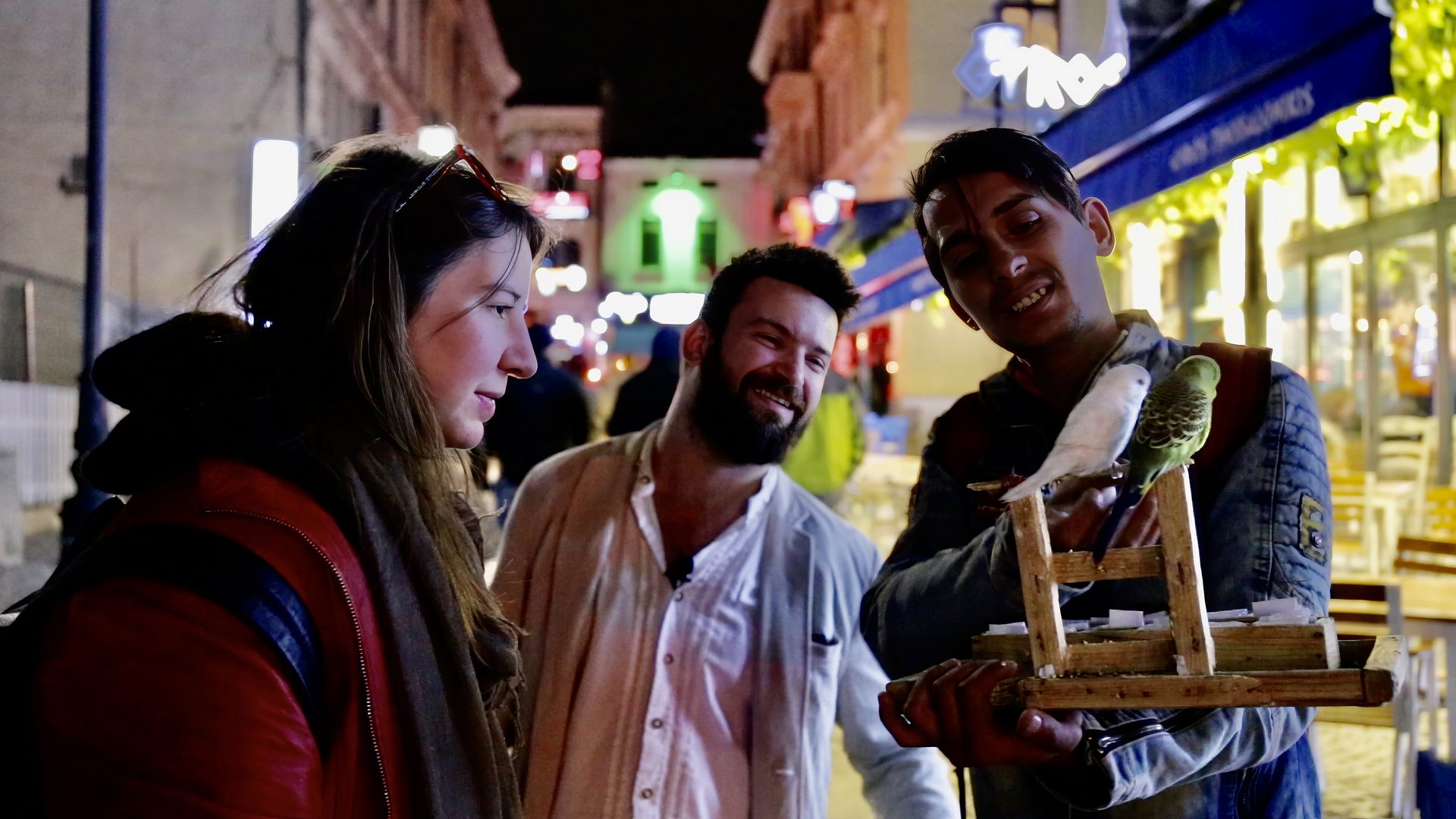
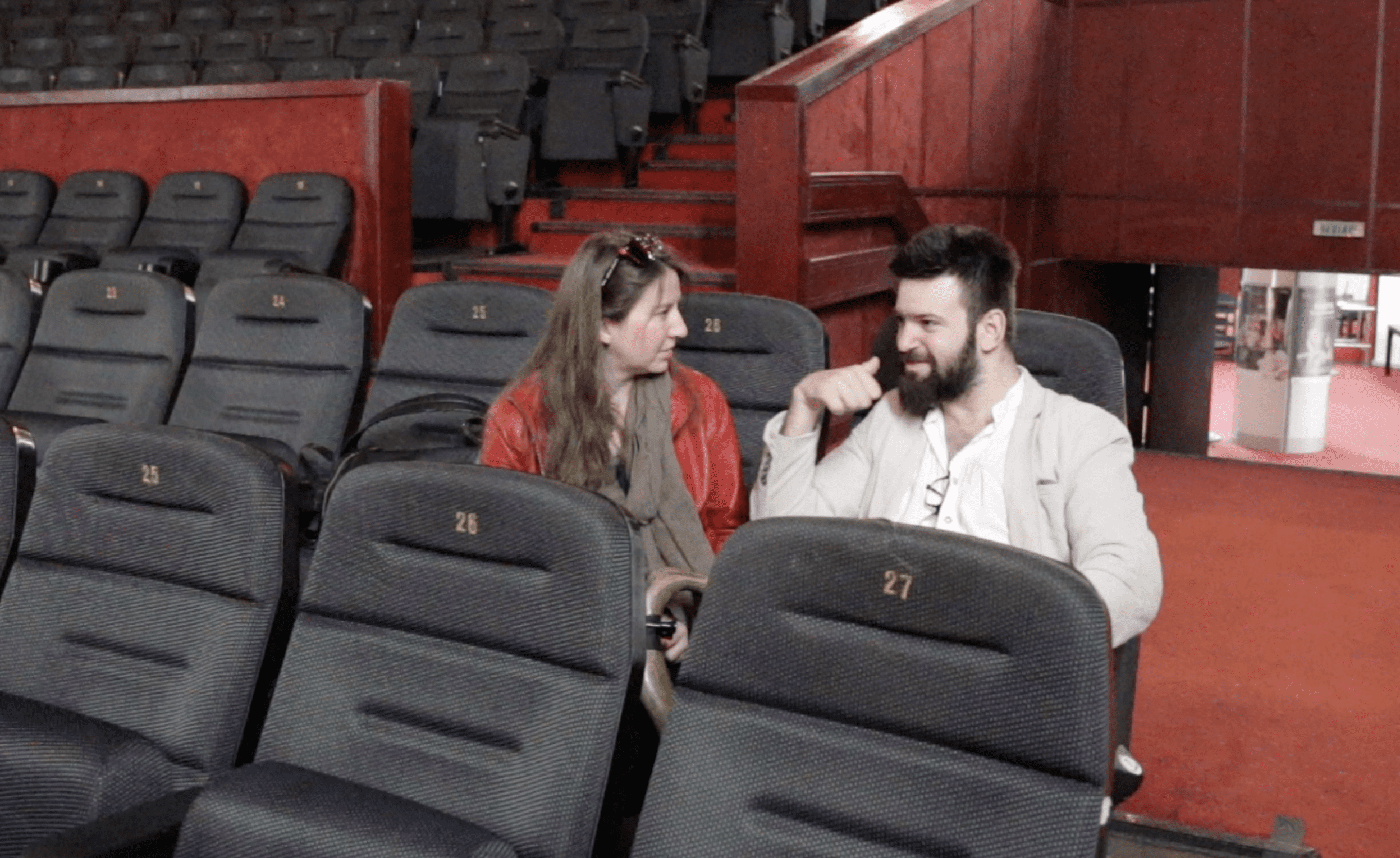
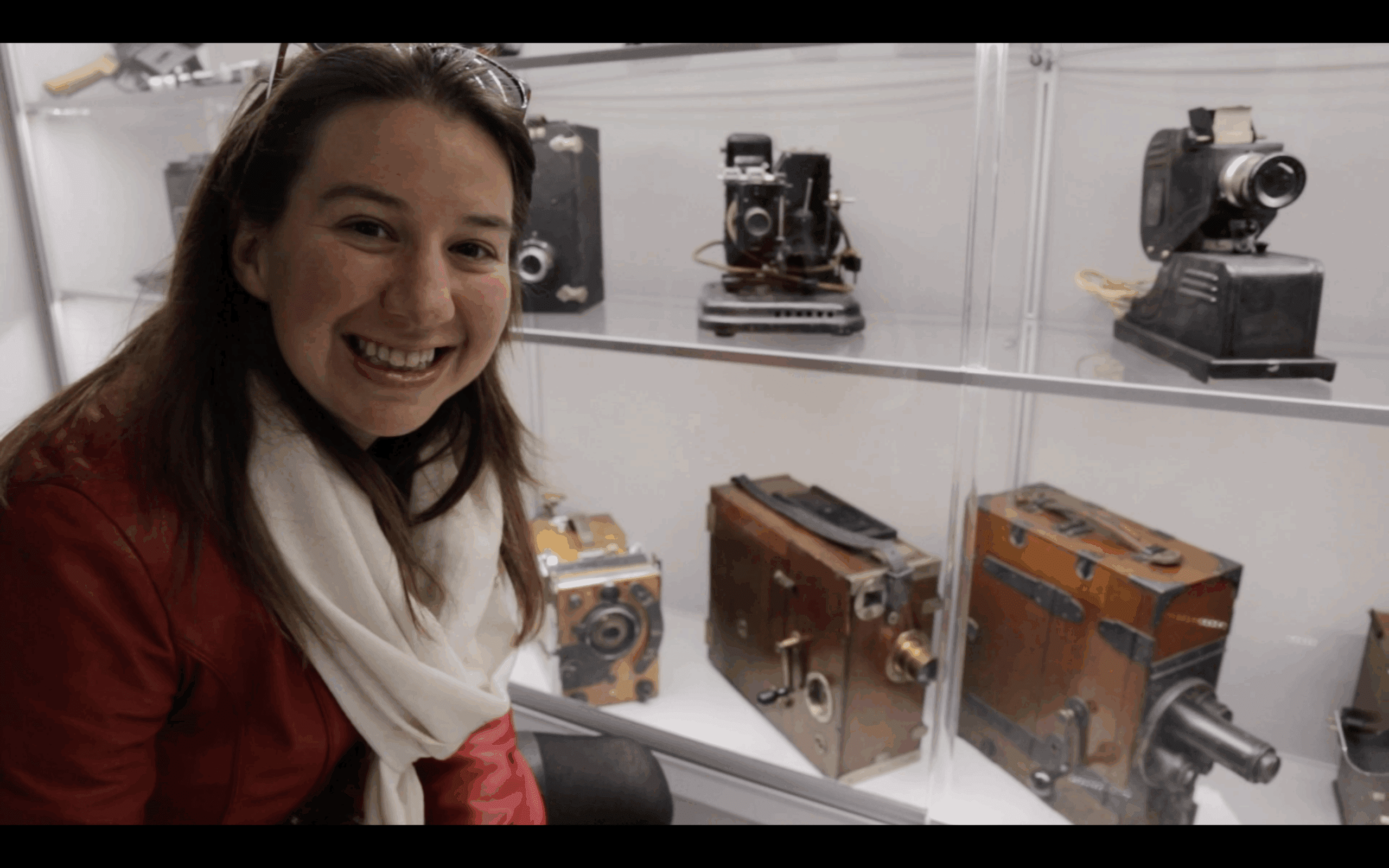
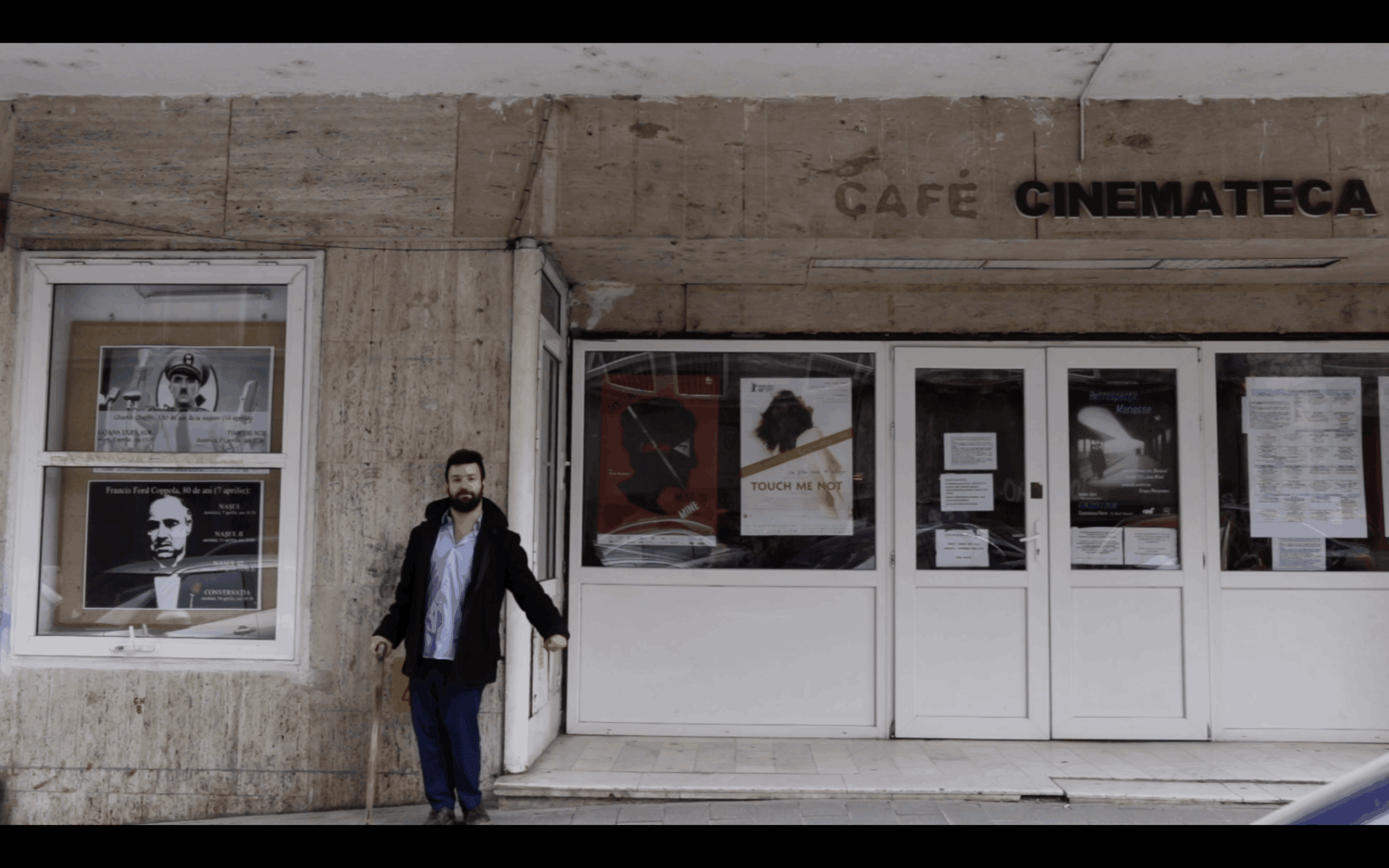
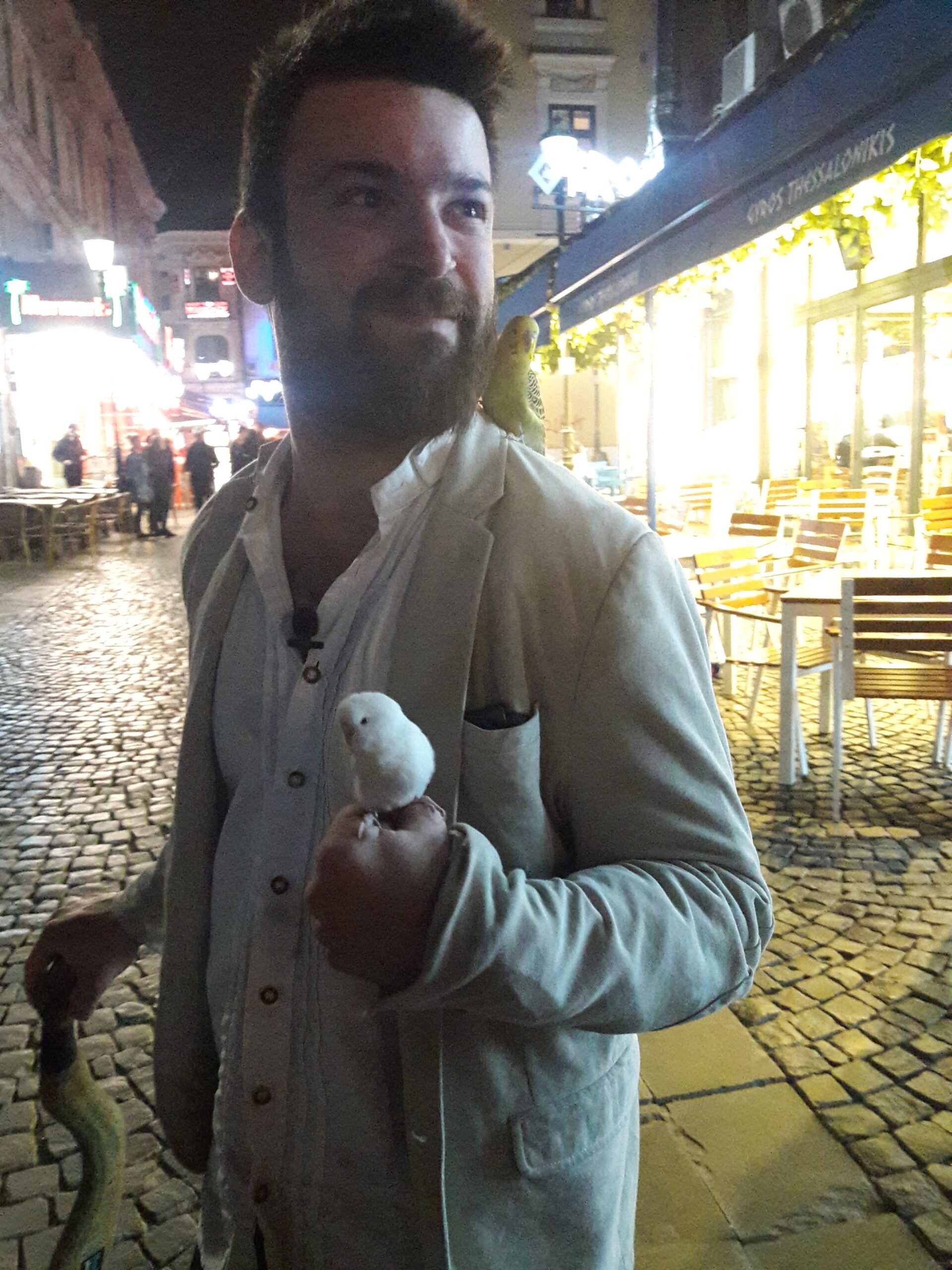
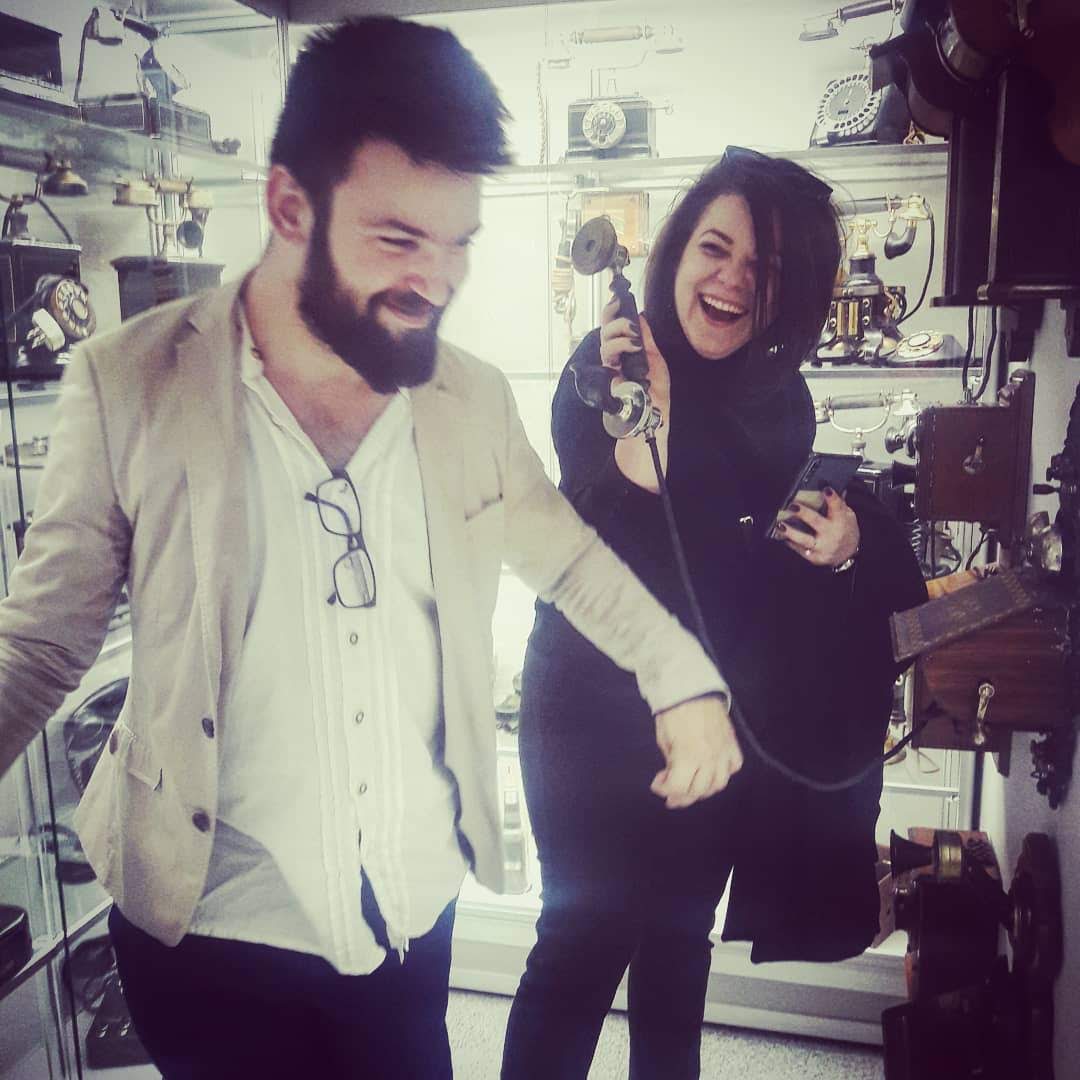
102: Romania
In Bucharest we visit Tedy Necula, the first disabled filmmaker in Romania. At age 12, Tedy fell in love with movies when cast as the lead actor in the film, “Noro.” By age 16, Tedy created his own commercial production company, which he still heads, filming inspirational stories. We visit film studios, quirky museums, universities, and share in Tedy’s love of wine as we celebrate his birthday.
Where Were You at 33?
Name: Tedy Necula
Place: Bucharest, Romania
Age at Filming: 30
Personal Logline: “Watch him as a mirror.”
Directed by Tedy: “Wings Of The Firebird” (2011), “Beside Me” (2018), “Meet George” (2025)
Tedy’s “Desert Island” Films:
“Scent Of A Woman” (1992) directed by Martin Brest, “Le Concert” (2009) directed by Radu Mihăileanu, “Meet Joe Black” (1998) directed by Martin Brest, “The Bucket List” (2007) directed by Rob Reiner, “The Infidel” (2010 ) directed by Josh Appignanesi
Tedy’s “guilty pleasure” film: “Nymphomaniac: Vol. 1” (2013) directed by Lars von Trier
Follow Tedy:
tedynecula.com/
Tedy’s Vimeo:
https://vimeo.com/tedynecula
Tedy’s Instagram:
@TedyNecula
Tedy’s Bio:
Tedy directs and produces inspirational films. His film career began when he starred at age 12 as the title role of the movie “Noro.” He went on to create his own film production company, and has created over 40 inspirational and documentary films targeting commercial and social projects in Europe. He is the first Romanian disabled film director, inspiring audiences. When he’s not making films, he gives motivational speeches and Ted Talks.
Cinema of Romania
In November 1948, after Romania fell under the Soviet Bloc, the film industry was nationalized and thus began the period of Socialist cinema, where films spoke to political ideology and reinforced stereotypes of what the working class should strive to become for a better nation.
In 1957, Romanian director, Ion Popescu-Gopo won the Palm D’or for best short film at the Cannes Film Festival for an animation called “Short History.” Romania has produced some fabulous animations since and now the Romanian film Academy Awards, established in 2007, are called the Gopo awards, in honor of Ion Popescu-Gopo.
Many films from Romania in the 1960s and 70s depict tales of great historical glory, such as “Forest of the Hanged” and “Michael the Brave.” “Michael The Brave” director, Sergio Nicolesceu, later became one of the public figureheads of the 1989 Romanian Revolution, which led to the downfall and execution of dictator Nicolae Ceausescu and his wife Elena on Christmas Day, 1989.
In later years, Nicolesceu expressed regret at his political activism because it distracted him from his creative endeavors.
Before and during the Communist years, cinema was funded and supported by the state, but after Ceausescu’s fall, cinema was among the first to go down with it. It took years before the cinema of Romania flourished again.
About the Romanian New Wave
The Romanian New Wave is described as being, not so much a collective movement, like the Nouvelle Vague of the late 1950s, where the filmmakers of France came together with a common set of ideals to fight the studio system, but rather, it consists of many talented Romanian filmmakers making individual films on their own terms at the same time.
The Romanian New Wave took off in the mid 2000s and some could say it is still continuing today. The commonality amongst Romanian New Wave films are the themes they tackled in post-Ceausescu Romania.
For forty-two years prior to Ceausescu’s downfall, the filmmakers of Romania were confined to making films that served the goals of the Communist government. Films had to promote the ideals of hard work, sacrifice and patriotism for the good of the State. Anything considered anti-party was an act of defiance and proved dangerous for the filmmakers.
Many of the Romanian New Wave filmmakers came of age in the 1980s, Ceausescu’s final decade. After Democracy was ushered in, it took the filmmakers of Romania over a decade to start producing quality films again, primarily because, the formerly state-run production companies had all gone bankrupt, and possibly because it took awhile to build up the courage to speak out again.
The Romanian New Wave films eventually came out in mass, starting with “Stuff and Dough” in 2001 (Cristi Puiu’s feature debut), though many critics credit Cristi Puiu’s 2005 black comedy hit, “The Death of Mr. Lazarescu” as the true start of the Romanian New Wave as it was the film that put an international spotlight on Romanian cinema, winning the Un Certain Regard prize at the 2005 Cannes Film Festival.
Following “The Death of Mr. Lazarescu,” Romanian films had massive international success with “12:08 East of Bucharest,” “How I Spent The End of the World,” and “4 Months 3 Weeks and 2 Days,” all of which won various distinctions at Cannes and other international festivals.
Many of the Romanian New Wave films tackled the horrors of the Ceausescu years and especially focused on the end of his reign. As a result, the Romanian New Wave films did not perform as well on their home turf as they did abroad. This is largely because of the content of the stories. While filmmakers were finally free to speak their mind about the terrors of life under Communist rule, the local Romanian audiences were not ready to remember. These films tackled hard subjects that Romanians had experienced first hand. Locals preferred to go to the movies to escape rather than to remember.
Radu Gabrea, is a filmmaker whose career spanned both the Ceausescu years and the Romanian New Wave. Radu’s early career began in Romania. He produced two award-winning features before emigrating to Germany after attending the Cannes film festival. Many of Radu’s films are of a historical nature.
The bulk of his work was produced in Germany, though after the fall of Communism in 1989, Radu re-immigrated back to his homeland and became the first director of the Romanian Film Center.
Radu Gabrea passed away in 2017.
Some Websites that discuss Romanian Cinema:
https://researchguides.dartmouth.edu/nationalcinemas/romania
https://harvardfilmarchive.org/programs/romanian-cinema-now
https://filmbuff.org.in/2023/11/a-brief-history-of-romanian-cinema/
https://cinemawavesblog.com/movements-page3/romanian-new-wave/
Suggested Films From Romania
“Noro” (2002) directed by Radu Gabrea
“The Death of Mr. Lazarescu” (2005) directed by Cristi Puiu
“The Way I Spent The End Of The World” (2006) directed by Cătălin Mitulescu
“12:08 East of Bucharest” (2006) directed by Corneliu Porumboiu
“4 Months, 3 Weeks, and 2 Days” (2007) directed by Cristian Mungiu
“Beyond The Hills” (2012) Directed by Cristian Mungiu
“Do Not Expect Too Much From The End Of The World” (2023) directed by Radu Jude
Cinema Landmarks To Visit:
- Castel Film Studios
- CinemaPro Movie theatre
- Cinemateca Eforie
- Museum of Romanian Records
- National Film Archives
The Village of Reci in Covasna County, where “Cold Mountain” and “The Brothers Bloom” were filmed.
Sinaia and Peles Castle, where “Youth without Youth” was filmed.
Corvin Castle where “Ghost Rider–Spirit of Vengeance” was filmed.
And more: https://romaniatourstore.com/blog/famous-movie-locations-in-romania/
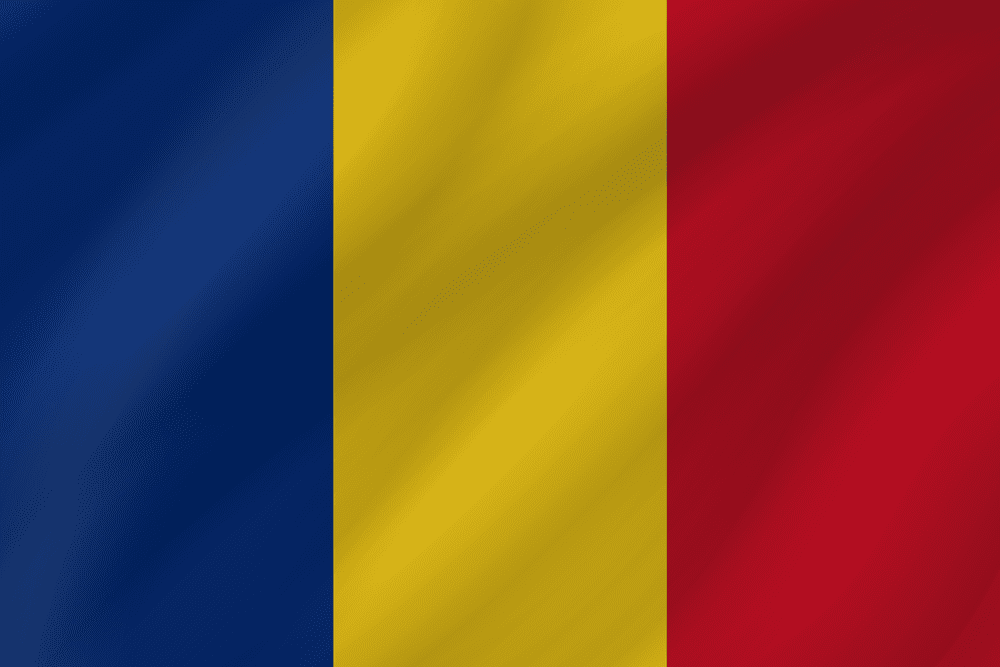
Official Name: Republica Populară Romînă
Population: 19 million
Capital City: Bucharest
Form of Government: Parliamentary Democracy
Official Language: Romanian
Currency: Romanian Leu RON
Borders: Bulgaria, Hungary, Serbia, Ukraine, Moldova and the Black Sea
About Bucharest and Romania
Bucharest, Romania’s capital city, has a population of around 2 million. It is in the south-central part of the country, on the banks of the Dâmbovița, a tributary of the Danube River.
Archeological evidence shows civilization dating back to the Neolithic age, while the name is said to date back to 1459: Bucureșt , as found in a signed document of Vlad III (“the Impaler”), the ruler of Walachia. Vlad III built the first fortifications in Bucharest, with the intent to discourage the Turks from invading Wallachia.
Bucharest became a main economic center during the Ottoman years, and became the capital of Walachia in 1659.
Until 1716, Bucharest was ruled by local princes, and then through a system called Phanariote rule, which was overthrown by the people in 1821.
National independence was gained as a result of a war from 1877-1878.
Today, Romania is a member of NATO, the European Union, and as of January 2025, Romania has become a full member of the Schengen Area.
Romania is usually described, especially by those of us in the West, as “Eastern Europe,” Romania is geographically speaking dead center between the continent’s easternmost and westernmost points.
Politically, of course, we still associate Romania with the East due to its forty-two year history under the Soviet bloc post World War Two.
Romania has drawn some unlucky cards throughout its history. Due to its location, Romania has fallen prey to some of the world’s biggest territorial disputes, between the Austro-Hungary empire, the Ottoman empire, and the Soviet Union.
Always trying to get out on the side of the winners, Romania switched sides twice during World War Two and ultimately ended up under the Soviet Union. In the decade’s to come, Romania transformed into a ruthless Totalitarian state.
Nicolae Ceaușescu, who began his career as a shoemaker, came to power in 1965; the second of two Presidents in Communist Romania. The first, Gheorghe Gheorghiu-Dej, took the presidency in 1947 after then Prime Minister Petru Goroza forced the King of Romania to abdicate and the Romanian People’s Republic was formed. After World War Two, Romania was placed under the Soviet bloc and due to the support from Moscow, Romania became increasingly Communist.
As a youth Ceaușescu joined the then-illegal Communist party and was jailed several times for his participation. In his first stint in jail, Nicolae met his wife, Elena, and in his second stint, he shared a cell with Gheorghe Gheorghiu-Dej, who took Nicolae under his wing as a protege. Ceaușescu slowly rose the ranks of the Communist party until he succeeded Gheorghiu-Dej after his death in 1965.
Nicolae Ceaușescu created one of the most brutal totalitarian dictatorships that Europe has ever seen, and he created a cult-of-personality for himself which mirrored that of the pomp and circumstances one could find in North Korea at the same time.
Under Ceaușescu there was no political freedom, no freedom of the media, even ownership of a typewriter could have been punishable by death.
Ceaușescu is known especially for his Secretariat, a secret police force which bugged phones, recorded conversations and encouraged neighbors to spy on neighbors, brothers on brothers, fathers on sons. This created a sense of paranoia amongst every-day Romanians that still persists today. One in every thirty Romanian was recruited to the secret police.
In the 1980s, Ceaușescu let his people starve in order to try to eliminate $10 billion of foreign debt. This caused the leader to export Romania’s food, while his citizens were forced to ration everything, including electricity.
Despite all this, during this same time-period, Nicolae Ceaușescu embarked on the most ambitious architectural project the world had ever seen: constructing the 1,100 roomed People’s Palace, which is now considered to be the “heaviest” building in the world as well as the second-largest architectural building (next to the Pentagon), and the world’s most expensive administrative building (costing $3 billion Euros).
A team of 700 architects worked on this monstrosity under the supervision of chief architect, Anca Petrescu. It took fourteen years to build; Ceaușescu was already dead for seven years by the time it was completed. Nicolae desecrated an entire neighborhood in Bucharest just to lay the plans for this building, the ultimate symbol of his Totalitarian power, despite having the bulk of Romanians underfed with extremely high unemployment rates.
As a result of the Romanian Revolution, Nicolae Ceaușescu was executed on Christmas Day, 1989, which led to the resulting fall of Communism as the official state party. Ion Iliescu of the National Salvation Front was named President, and Petre Roma, Prime Minister.
Three Things To Do in Bucharest
Visit the Museum of Romanian Records
Meander walk through Bucharest’s Old Town
Visit Cărturești Carusel Bookstore
Stephanie’s Top 3 Travel Tips to Visit Romania
Try the fabulous Romanian wine!
Take an old Soviet style train trip [I went to Moldova]
Plan ahead if you are a vegetarian or have dietary restrictions
Useful Links:
Mr History’s A Quick History Of Romania: https://www.youtube.com/watch?v=ES12T3cE0xU
Lonely Planet: https://www.lonelyplanet.com/destinations/romania
https://www.nomadicmatt.com/travel-guides/romania-travel-tips/
